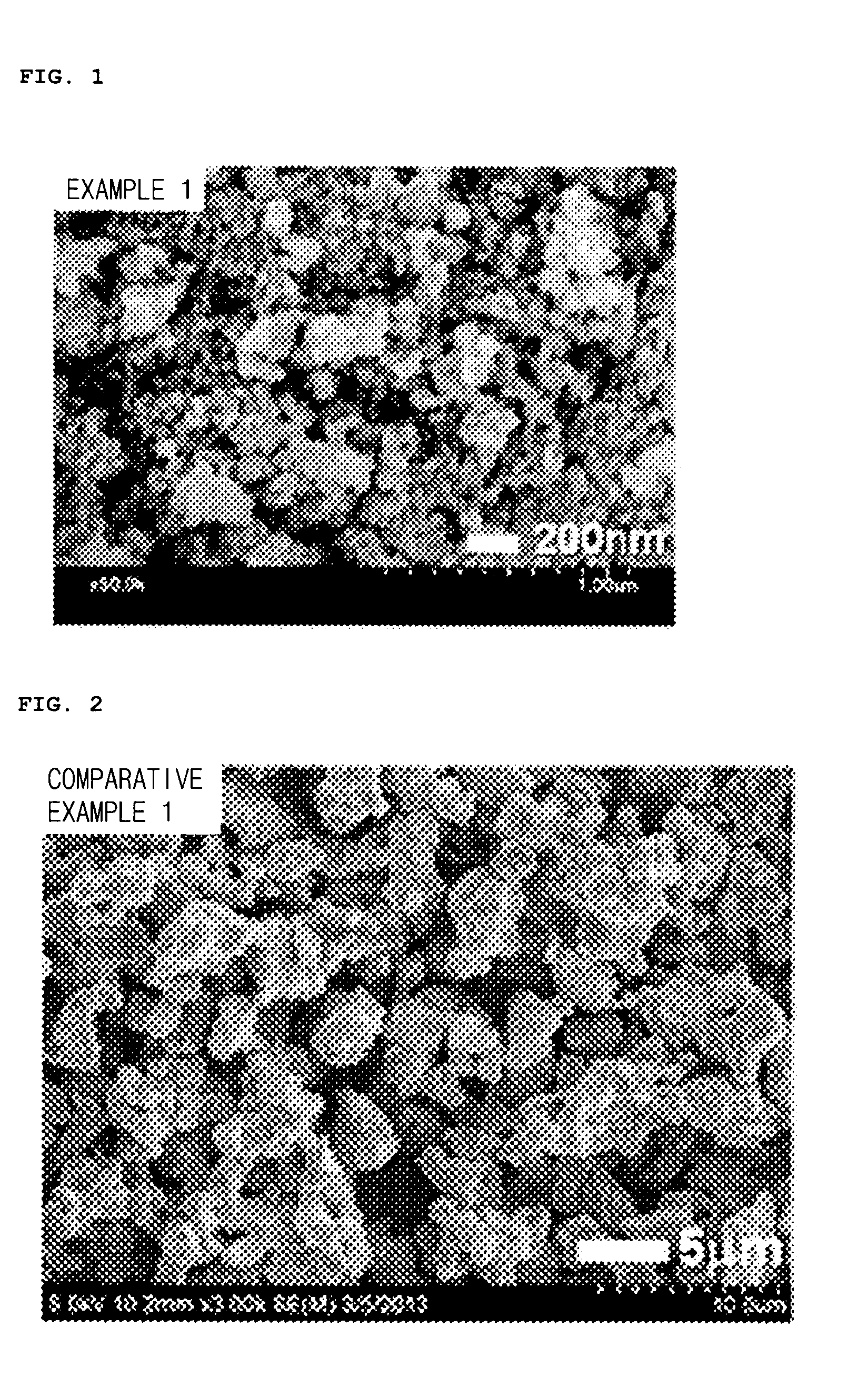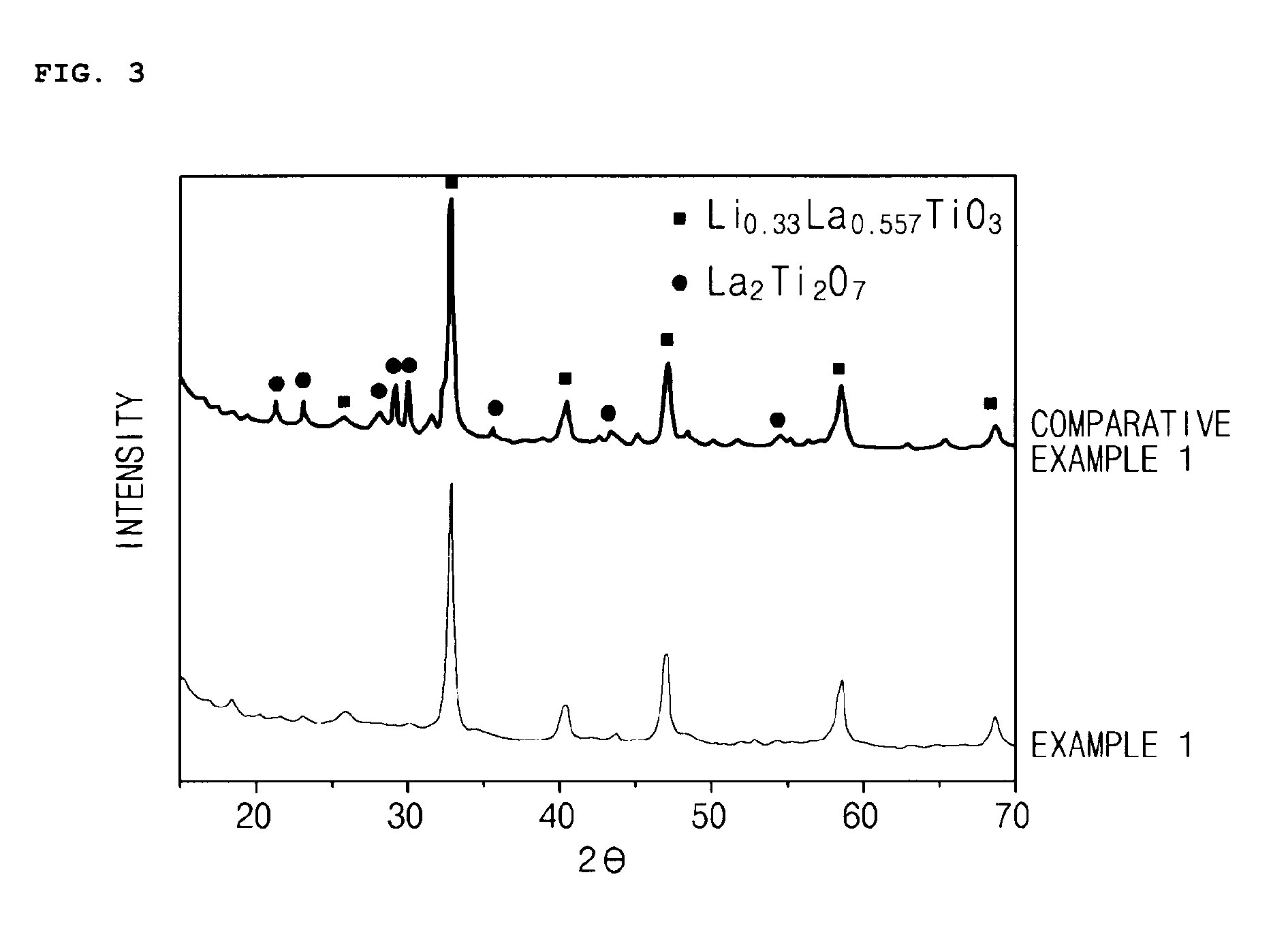Solid electrolyte particles, preparation method thereof, and lithium secondary battery comprising the same
a technology of solid electrolyte particles and lithium secondary batteries, which is applied in the direction of non-aqueous electrolyte cells, alkali titanates, sustainable manufacturing/processing, etc., can solve the problems of limited safety, low efficiency, and low efficiency of electrolyte materials, and achieves easy preparation, easy to increase, and increase the movement path of lithium ions
- Summary
- Abstract
- Description
- Claims
- Application Information
AI Technical Summary
Benefits of technology
Problems solved by technology
Method used
Image
Examples
example 1
[0072]87.14 ml of an aqueous TiO2 colloidal solution which includes TiO2 having an average particle diameter of about 3 nm in a solid content concentration of about 50 mg / ml, 4.997 g of La2O3, and 0.665 g of Li2CO3 were added to 200 ml of ethanol. Then, in order to mix them as uniformly as possible, the above materials were mixed using a ball mill for 6 hours to prepare a precursor solution. The precursor solution was dried at 100° C. to entirely remove a liquid therefrom and then put in an aluminum crucible to be introduced into an electric furnace. The temperature was increased to 850° C. at a heating rate of 50° C. / min and was then held for 10 minutes (reaction time) while the temperature was maintained at 850° C. Thereafter, the temperature was quickly decreased to room temperature at a cooling rate of 50° C. / min to obtain Li0.33La0.557TiO3 solid electrolyte particles.
example 2
[0073]Li0.33La0.557TiO3 solid electrolyte particles were obtained in the same manner as in Example 1 except that the reaction time was 30 minutes in Example 1.
example 3
[0074]Li0.33La0.557TiO3 solid electrolyte particles were obtained in the same manner as in Example 1 except that LiOH was used instead of Li2CO3 in Example 1.
PUM
| Property | Measurement | Unit |
|---|---|---|
| particle diameter | aaaaa | aaaaa |
| particle diameter | aaaaa | aaaaa |
| temperature | aaaaa | aaaaa |
Abstract
Description
Claims
Application Information
 Login to View More
Login to View More - R&D
- Intellectual Property
- Life Sciences
- Materials
- Tech Scout
- Unparalleled Data Quality
- Higher Quality Content
- 60% Fewer Hallucinations
Browse by: Latest US Patents, China's latest patents, Technical Efficacy Thesaurus, Application Domain, Technology Topic, Popular Technical Reports.
© 2025 PatSnap. All rights reserved.Legal|Privacy policy|Modern Slavery Act Transparency Statement|Sitemap|About US| Contact US: help@patsnap.com


